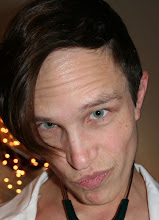
My thoughts in general: So, I watched the music video for My Chemical Romance's "Teenagers." Honestly, I didn't like it. I didn't like the song or the video. While I have enjoyed My Chemical Romance (MCR) stuff in the past, this one really didn't do it for me. It really just seemed like they wanted to make something a little more accessible to general (teenage) audiences in an effort to expand their fan base. The video just seemed full of typical imagery that tried to convey this idea of "why teenagers scare adults." The cheerleaders... typical. Bradley, in his blog about this video, touched on the similarity between this one (and it's cheerleaders, etc.) and the video for Nirvana's "Smells Like Teen Spirit." He has some very interesting things to say. Check it out. It's linked here. So, anyway, the teenagers in the crowd. I thought it was interesting at first when they were just sitting not doing anything. It reminded me of a classroom. However, once they started rioting, it totally felt contrived. Obviously, it was scripted that way, but that's not the way I mean it was contrived. It felt like they wanted a point in the video to "rally the troops" (the viewers of the video), and this was the weak excuse for conveying it in the video for a weak excuse for a song. Lame. It also strikes me how different this song/video is from other MCR work. I saw them in concert when they played with Alkaline Trio in 2005 (maybe 2006, but I'm pretty sure it was 2005). Alkaline Trio put on a great show, and I loved it. Then, MCR took the stage, and I guess it didn't really do it for me then either. As they played onstage, behind them there were pseudo-Catholic images being projected that really just gave a really creepy vibe. It was simply unpleasant. With that memory, I watched this video and was hit by something totally different. It seemed like it was trying to be catchy, mainstream, and rallying. However, in reality, it was lame.
My thoughts on application: The main thing I thought about application to the classroom is how this song/video seem to try to change MCR's style/image to be more inviting in general to gain a wider fan base. I think it would be interesting to start a discussion by comparing this song/video with previous MCR work. The comparison would be interesting as we discuss how the band's sound and image has changed.

























